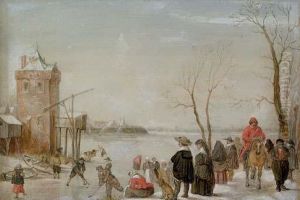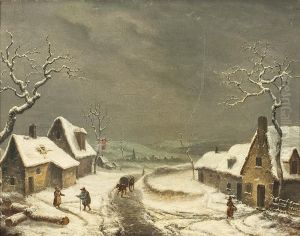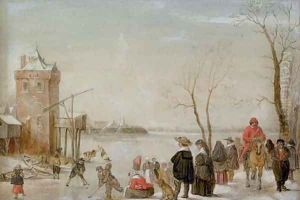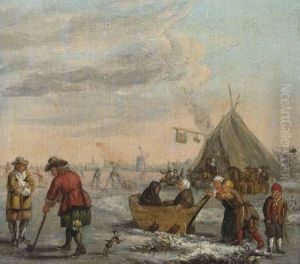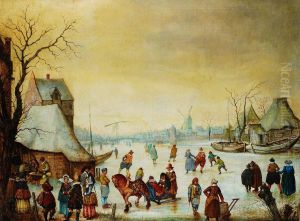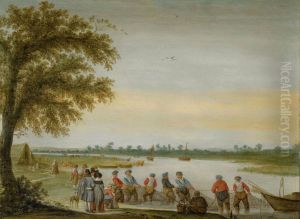Barent Avercamp Kampen Paintings
Barent Avercamp, born in 1612 in Kampen, a city in the Dutch Republic, was a notable figure in the Golden Age of Dutch painting. He hailed from a family of artists, the most famous among them being his uncle Hendrick Avercamp, who was renowned for his winter landscapes filled with ice skaters. Barent continued in the family tradition, focusing his artistic endeavors on similar subjects and thus contributing to the perpetuation of this distinctly Dutch genre of painting. Despite the overshadowing fame of his uncle, Barent developed his unique style within the genre, earning recognition in his own right during the 17th century.
Barent Avercamp's life was deeply intertwined with the city of Kampen, where he lived and worked for the majority of his life. Unlike his uncle Hendrick, who was known to be deaf and mute, little is documented about Barent’s personal life, including any potential disabilities. Barent’s works, however, suggest a deep engagement with the everyday life of his contemporaries, depicting vibrant scenes of Dutch winters with meticulous attention to detail and a keen observation of social interactions amidst the icy landscapes.
His technique and composition were deeply influenced by his uncle’s work, yet Barent introduced his own nuances, such as a warmer palette and a slightly more relaxed approach to the depiction of figures and landscapes. This subtle differentiation helped carve out his niche in the Dutch art scene. His paintings are characterized by their lively scenes of winter activities, showcasing not just the leisure pursuits of the Dutch golden age but also providing insights into the clothing, architecture, and social dynamics of the time.
Despite his contributions to Dutch art, Barent Avercamp's works were somewhat overshadowed by those of his uncle and other contemporaries, leading to a relatively modest reputation outside of his homeland. Nevertheless, his paintings are considered important for their artistic merit as well as their historical value, offering a window into the life of 17th-century Netherlands. Today, Barent Avercamp's works are held in several Dutch museums, where they continue to be appreciated for their charm and historical significance.
